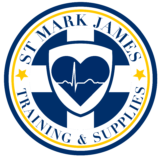Basic Life Support (BLS / Healthcare Provider)
Overview
Basic Life Support (BLS) is an advanced, fast-paced CPR course for healthcare providers and first responders. It focuses on high-performance, team-based resuscitation using the latest guidelines. Training is hands-on with timed scenarios—designed to help you respond confidently on the job.
Duration: typically 3–4 hours (initial); 2–3 hours (renewal)
Certification length: typically 1 year (varies by program/provider)
Audience: nurses, physicians, dentists, paramedics, fire/EMS, clinical students, lifeguards
Formats: In-class or accelerated/renewal sessions where available
Availability, pricing, and certificate details vary by city and provider. Please confirm local specifics before registering.
Who Should Take This Course
- Hospital and clinic staff who require professional-level CPR
- Dental and allied health professionals (physio, chiro, RT, OT, pharmacy)
- EMS/fire, lifeguards, athletic therapists, and advanced first aiders
- Students entering healthcare programs that list BLS as an admission or placement requirement
What You’ll Learn (Key Skills & Competencies)
High-performance CPR (adult/child/infant)
- 1-rescuer and 2-rescuer compressions/ventilations
- Compression fraction, depth, recoil, and minimizing pauses
- AED use with rapid pad placement and team call-outs
Airway & ventilation
- Bag-valve-mask (BVM) technique with an assistant
- Adjunct awareness (OPA/NPA) and oxygen considerations (scope-appropriate)
Team dynamics
- Closed-loop communication, role assignment, and leadership
- Running timed scenarios from recognition to first shock/first ventilation
Choking & special situations
- Adult/child/infant choking (responsive/unresponsive)
- Opioid emergencies (naloxone overview), pregnancy, trauma considerations
Assessment & hand-off
- Rapid patient assessment, pulse and breathing checks
- Coordinated hand-off to ALS/EMS with concise reporting
Find Basic Life Support (BLS) Near You
Choose your city to see live dates, pricing, and registration:
- Vancouver, BC
- Calgary, AB
- Edmonton, AB
- Kelowna, BC
- Grande Prairie, AB
- Lethbridge, AB
- Regina, SK
- Winnipeg, MB
See all locations
https://stmarkjamestraining.ca/locations/
Related courses (on St. Mark James Training)
Note: BLS (Healthcare Provider) is intended for clinical settings and healthcare students. Workplace approval requirements vary by province and employer. CPR-only/BLS courses may not satisfy some OH&S first aid requirements. Please choose your city above for local details, schedules, and pricing.
Course Format & Time
In-Class (Initial):
- Instructor-led skills stations + scenario circuits
- Typical total time: 3–4 hours (includes evaluation)
Renewal / Update:
- For current cardholders comfortable with core skills
- Typical total time: 2–3 hours with focused scenarios
Actual durations may vary by class size, provider, and prior experience.
Evaluation & Certification
- Continuous skills evaluation in stations (compressions, BVM, AED)
- Scenario assessment with timing and communication criteria
- Short knowledge check (written or integrated)
- Successful participants receive a BLS / Healthcare Provider certificate
Validity: typically 1 year; renewal required to remain current
Prerequisites & Accessibility
- No formal prerequisite for initial BLS; recent CPR experience helps
- Renewal classes may require a current BLS card (check local rules)
- Light to moderate physical activity (compressions, kneeling)
- Please advise if you need accommodations—we’ll do our best to support you
What to Bring
- Government-issued photo ID (and professional/student ID if applicable)
- Comfortable clothing for compressions and BVM practice
- Any required documentation for renewal eligibility
Group & On-Site Training
Hospitals, clinics, and organizations can schedule private BLS sessions on-site or at our training centres. Custom dates and volume pricing are available.
Frequently Asked Questions
How is BLS different from CPR-C?
BLS is professional-level CPR: team-based response, BVM use, tighter timing, and advanced scenario work. CPR-C covers all ages but is intended for the general public.
Do I need a current BLS card to take renewal?
Most providers require a valid, unexpired BLS certificate for renewal. If yours is expired, take the initial course.
Is there an online option?
Some providers offer a blended/accelerated path with online theory plus a shorter, in-person skills check. The certificate is the same as the in-class course.
How long is BLS valid?
Typically 1 year, though employer or school policies may require more frequent refreshers.
